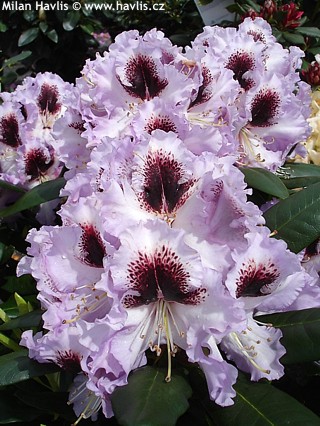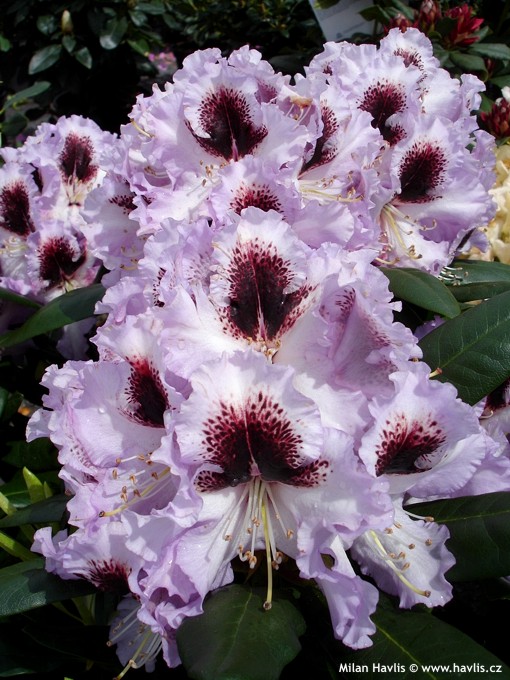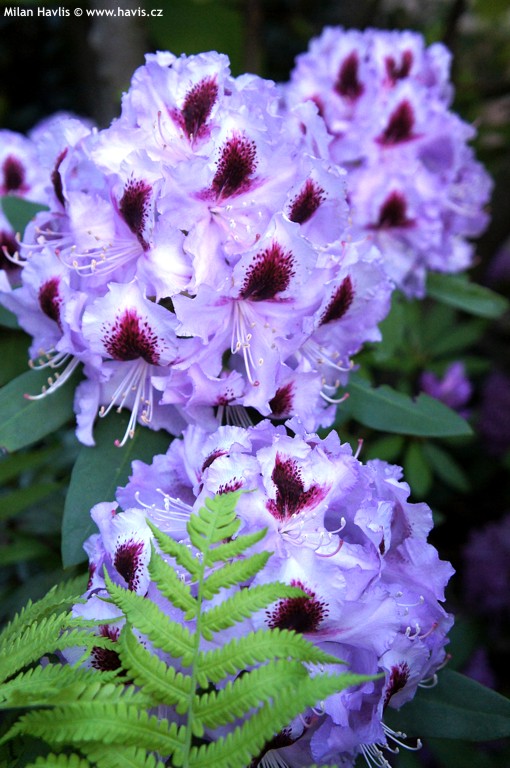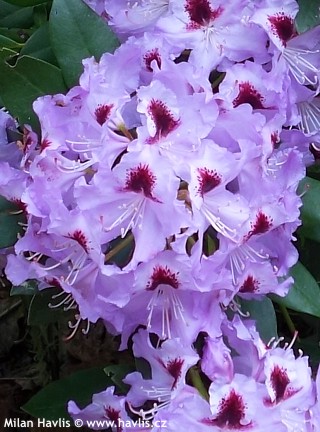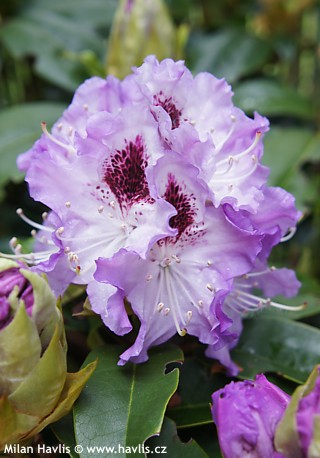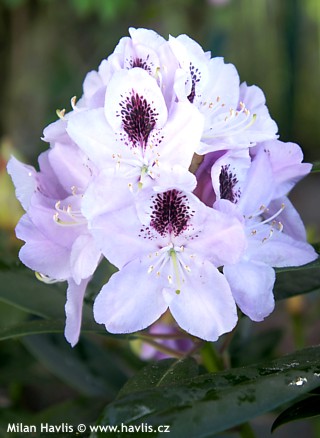Rhododendron 'PINGUIN' rhododendron
Rhododendron
Rhododendrons are reliable, beautifully flowering, evergreen shrubs of variable origin: S.W. China, Himalayas, Northern America, and even Europe. The original species were hybridized several times for better performance so in the 1950´s there were more than 10,000 cultivars registered, and the number keeps increasing.
Have you had a penguin in your garden yet? Well, here’s your chance to get one. This rhododendron is called Pinguin not just because it can take the cold but because of its beautifully contrasting flowers. They are only very light violet with conspicuous deep burgundy red, almost black blotch. They are quite large: 7-9 cm wide and come out from end May until early June. Attractive leaves are deep green and glossy. Bred by H.Hachmann in 2005.
For richer flowering and growth dead-head where possible. The roots are shallow, spreading to sides in search for nutrients. Never plant them too deep. The soil has to be acidic (pH 4.5-5.5), rich in humus, cool and always moist. Ideal soil mixture is peat with lime-free, light garden soil topped with leaf-mould. Fully hardy to min. -24°C (USDA zone 6), possibly more.
Last update 29-12-2008

































